10 Ideas to Help You Sell UX Work

- 831 shares
- 4 years ago
Service design is a process where designers create sustainable solutions and optimal experiences for both customers in unique contexts and any service providers involved. Designers break services into sections and adapt fine-tuned solutions to suit all users’ needs in context—based on actors, location and other factors.
“When you have two coffee shops right next to each other, and each sells the exact same coffee at the exact same price, service design is what makes you walk into one and not the other.”
— 31Volts Service Design Studio
See how effective service design can result in more delightful experiences.
We'll get into defining Service Design and seeing where it's being applied. So, what is service design? And, probably more importantly, what *isn't* service design? So, service design is about designing an experience from a service orientation. So, it's like user experience design
– where you're designing for the UX usually of a digital product – but in this case the service may touch many, many other places – you know, "omni-channel" as it's called: different channels. So, the user might start out on the web and they might go to the phone and they might go to the store or they might go to a location or to a form. They might pick up a brochure; back onto their mobile phone. And however that whole service is being delivered – you know – sometimes you *have to* go to a different channel
in order to continue with the journey. And so, that's what service design is. It's a *wider kind of view* – stepping *back* from UX. I like to think of it from a *systems thinking perspective*. And by 'systems thinking', I'm talking about the engineering discipline, not systems as in database systems. Though systems are actually really important in service designs
because – you know – you have computer systems, database systems, you've got business processes and logic. So, service designs think about *everything* – not just what's happening on the screen. And they think about what the smoothest ways are to deliver that – but not just from the consumer's perspective; they think about *how* to deliver the service experience
in a way that's *appropriate* for the *user* and for the *business* and for the *systems* that are going to support that – the processes and all the back-end stuff. They're about being *exact* about that because – you know – it's *very* very apparent when there's a service experience failure. So, service design has to be *feasible*. It means it has to work again from a business perspective. And it has to be *scalable*
so that you can't just come up with a great idea but then it doesn't work for rolling it out to 10 million people. The other thing is *financial viability* is really important. And I think that's part of scale. So, there's engineering scale. But there's also "Is this going to work?" – you know. If it's a free service, for example, is freemium – that model – going to work? Or are you going to have to change the model and therefore maybe jeopardize your users?
Users don’t access brands in a vacuum, but within complex chains of interactions. For example, a car is a product, but in service design terms it’s a tool when an elderly customer wants to book an Uber ride to visit a friend in hospital. There’s much to consider in such contexts. This user might be accessing Uber on a smartphone, which she’s still learning to use. Perhaps she’s infirm, too, lives in an assisted living facility and must inform the driver about her specific needs. Also, she’s not the only user involved here. Other users are any service providers attached to her user experience. For example, the driver that customer books also uses Uber—but experiences a different aspect of it. To cater to various users’ and customers’ contexts as a designer, you must understand these sorts of relations between service receivers and service providers and the far-reaching aspects of their contexts from start to finish. Only then can you ideate towards solutions for these users’/customers’ specific ecosystems while you ensure brands can deliver on expectations optimally and sustainably.
In service design, you work within a broad scope including user experience (UX) design and customer experience (CX) design. To design for everyone concerned, you must appreciate the macro- and micro-level factors that affect their realities.
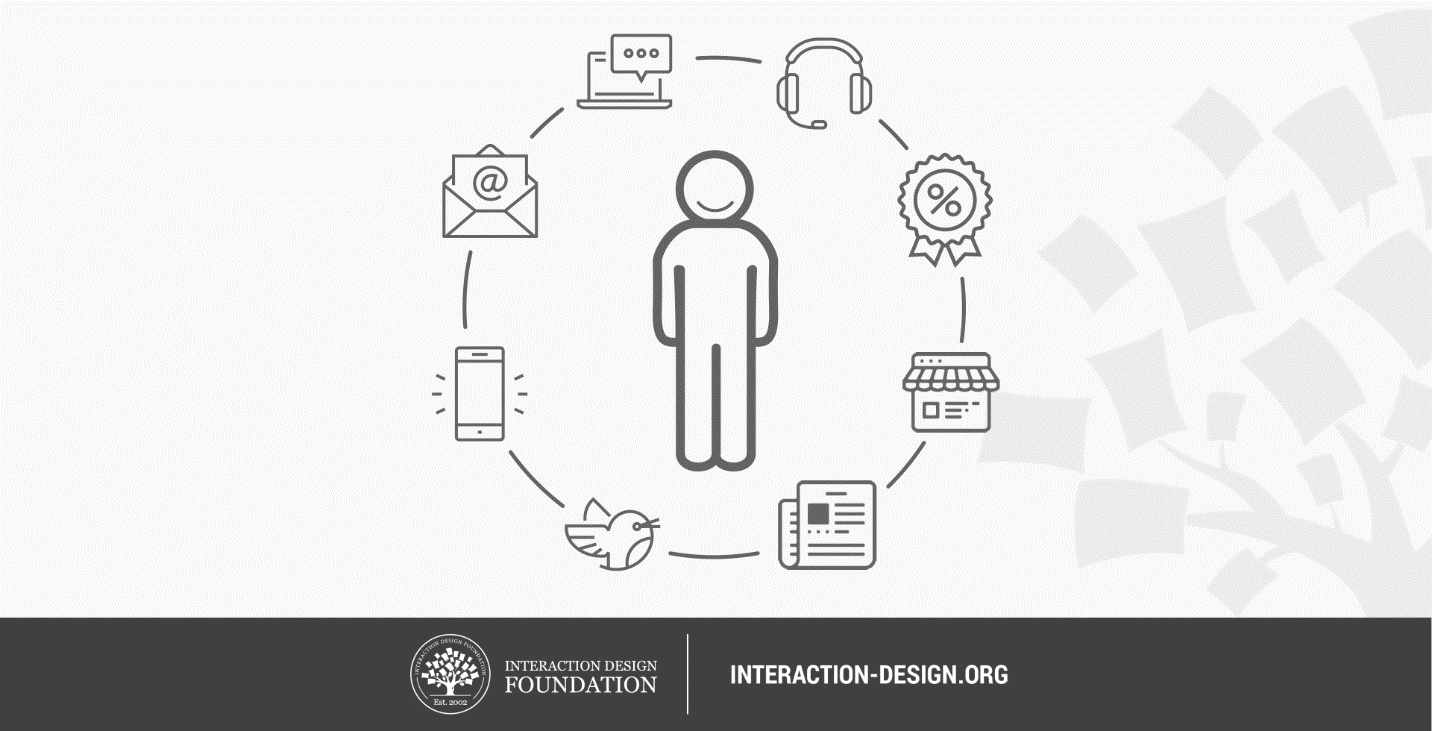
A service design experience often involves multiple channels, contexts and products.
Marc Stickdorn and Jakob Schneider, authors of This is Service Design Thinking, identify five key principles—for service design to be:
User-centered – Use qualitative research to design focusing on all users.
Co-creative – Include all relevant stakeholders in the design process.
Sequencing – Break a complex service into separate processes and user journey sections.
Evidencing – Envision service experiences to make them tangible for users to understand and trust brands.
Holistic – Design for all touchpoints throughout experiences, across networks of users and interactions.
Designers increasingly work more around services than around physical products—e.g., SaaS (software as a service). Meanwhile, with advances in digital technology continually redefining what users can expect whenever they proceed towards goals, brands focus on maximizing convenience and removing barriers for their users. A digital example is Square, which unbundles point-of-sale systems from cash registers and rebundles smartphones as potential point-of-sale systems.
First, identify these vital parts of any service encounter:
Actors (e.g., employees delivering the service)
Location (e.g., a virtual environment where customers receive the service)
Props (e.g., objects used during service delivery)
Associates (other organizations involved in providing the service – e.g., logistics)
Processes (e.g., workflows used to deliver the service)
You’ll need to define problems, iterate and address all dimensions of the customers’, users’ and business needs best in a holistic design. To begin, you must empathize with all relevant users/customers. These are some of the most common tools:
Customer journey maps(to find the customers’ touchpoints, barriers and critical moments)
Personas (to help envision target users)
Service blueprints (elevated forms of customer journey maps that help reveal the full spectrum of situations where users/customers can interact with brands)
You should use these to help leverage insights to account for such vital areas as accessibility and customer reengagement.
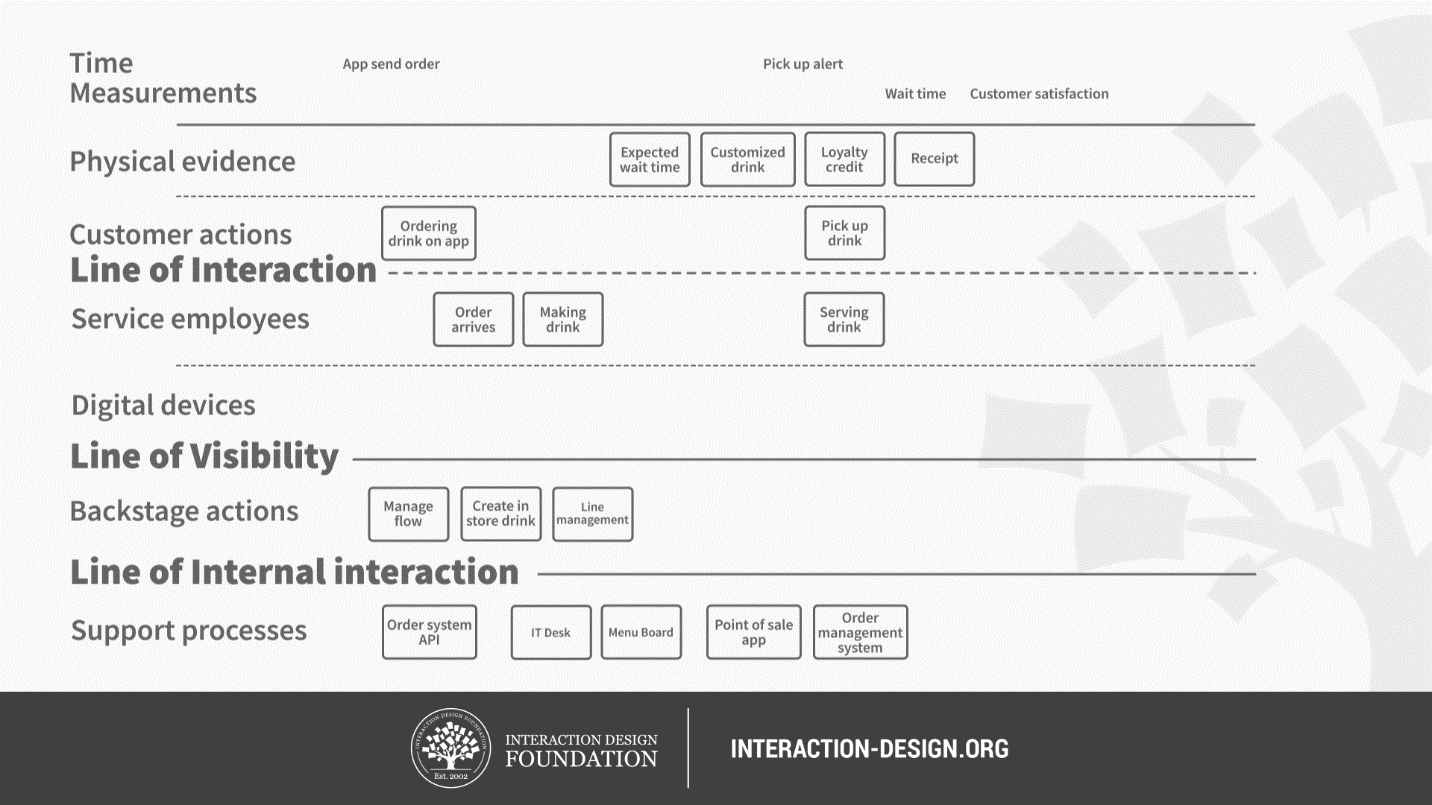
Service blueprints are an important tool in the service design process.
Remember to design for the complete experience. That means you should accommodate your users’/customers’ environment/s and the various barriers, motivations and feelings they’ll have. Here are some core considerations:
Understand your brand’s purpose, the demand for it and the ability of all associated service providers to deliver on promises.
The customers’ needs come ahead of the brand’s internal ones.
Focus on delivering unified and efficient services holistically—as opposed to taking a component-by-component approach.
Include input from users.
Streamline work processes to maximize efficiency.
Co-creation sessions are vital to prototyping.
Eliminate anything (e.g., features, work processes) that fails to add value for customers.
Use agile development to adapt to ever-changing customer needs.
Service design applies both to not-so-tangible areas (e.g., riders buying a single Uber trip) and tangible ones (e.g., iPhone owners visiting Apple Store for assistance/repairs). Overall, service design is a conversation where you should leave your users and customers satisfied at all touchpoints, delighted to have encountered your brand.
Learn all about service design by taking our course: Service Design: How to Design Integrated Service Experiences.
Read this insightful piece, Service Design: What Is It, What Does It Involve, And Should You Care?
Discover more about service blueprinting in Service Design 101
Read this eye-opening piece exploring Service Design Thinking
Examine Uber’s service design in Uber Service Design Teardown
A service design diagram is a visual representation of the overall structure and components of a service, including the interactions between different elements. It provides an overview of the service and helps stakeholders understand how different parts of the service fit together. It may include information such as user interfaces, system components, data flows, and more.
So, I'd like to introduce you to the next mapping tool here. It's the *ecosystem mapping*. It's a template that you can use. It's also a group activity. To start with, let's look at this quote here from the newly appointed CEO of Nokia in 2011. And he said this: What he pointed to there is this problem
that every business faces when they're delivering a service, which is the relationship and dependencies of the entire ecosystem. Now, at this stage, Microsoft acquired Nokia, and so they inherited this particular problem. But I think it illustrates the point that we're looking for here – which is:
What's going on in your *entire* ecosystem? And how are you going to deal with that in terms of creating a service that really resonates with customers? So, I like to define the ecosystem as those who are *bringing* the experience to the customer. Some people define ecosystem with "the customers" or "the users" and I don't think that's helpful; so,
I would like to define ecosystem as *those who are manufacturing the experience*. So, think of it as the employers, employees, supply chain, suppliers, contractors – everyone that goes into making that, building *that stage* – you know – making that thing perform. It's the *things they're doing* and the *value they're bringing*. It's the *information* that they need or
use or require or share; the *people* or systems that *they* interact with, the *services* that are available to them, the *devices* that they might use and the channels they might communicate with. So, in Amazon's case, they have their own delivery kind of ecosystem. That's my truck.
The Amazon ecosystem delivery is actually UPS and FedEx as well as USPS, the US postal service. But they've also added *private drivers*. So, they have private drivers It looks like somebody's dad, somebody's father driving the truck. So, you have *that* going on. And then you have the *kiosk* that takes / that inputs the packages. Behind there, there's the *database*. So, there's a system there.
From that database, there's an email notification. The email notification goes up, pings the customer and sends that email to the customer. The customer gets it on their device and so forth. We also have the infrastructure over here, so the drivers got their own special Amazon app. There's some kind of logistics happening here behind the scenes. So, you get the general idea. It's mapping everything that's happening in the ecosystem:
all the actors all the roles, all the stuff that's going on and looking for where the dependencies are and where the breakpoints are that occur within that ecosystem – very very important. And if you *don't* do ecosystem mapping, then it's my belief that you're not really leveraging the whole set of tools that service design affords. Ecosystem mapping is as *important as personas*. With the ecosystem map, you want to start with your *current state*.
It's not a map of the future, desired state. It's where you're at *now*. It's about understanding all the connections that occur in all those dependencies. It's about understanding how stakeholders, databases, devices, products, services – how everything kind of maps together and how that information flows and the exchange of value that occurs between – you know – all these different actors that are going on here
and – yeah – it's a *group activity*; just like a lot of service design things, you're showing here with your team. Now, here's an example from the Fiat Group in Italy – the Fiat Design Group – and they mapped out the future of transportation. So, they actually looked at the future side of things. And you can do that, but first do the *current* picture view.
It's important to – you know – *don't dream out what could be*; *understand what you have to deal with*. Now, Fiat's group actually added the what, why, how, who, when and where of the situation and then looked at the ecosystem across these different lenses that you can see here in this example. The activity here is to take your group and start *drawing* this out.
Each person will draw their *own* version of this. So, if you have a big white board – if you have a big one of these – you'll put them all together. Then each person presents to the group because you're going to see similarities and differences – and you can note those, write those down. Post those to a wall and draw the connections between all the individual maps, so you have so many different ones. And then use this alongside your journey maps and use it to guide your service blueprint. The ecosystem map is you building up to your service blueprint.
And instead of jumping into the surface blueprint, this is about doing your due diligence to *dig deeper* and find out what exactly is happening in that vital ecosystem.
Actors/Roles: Entities bringing the experience to the customer.
Information Flow: Details of data shared, required, or used.
Interactions: Between people, systems, and services.
Devices & Channels: Tools and mediums of communication.
The diagram is essential for understanding the current state of a service, emphasizing the intricacies and interdependencies, guiding service blueprint creation, and identifying potential breakpoints or areas for enhancement.
In the context of service design, frontstage refers to the actions performed by employees that are visible to the customer. It includes interactions such as customer service, product demonstrations, and any other activities that customers can directly observe.
On the other hand, backstage actions are performed by employees that are not visible to the customer. These actions support the service delivery and may include tasks such as inventory management, quality control, and other behind-the-scenes operations.
Good service design is a holistic approach that prioritizes every user interaction, both in digital and real-life contexts. Jonas Piet, Director and Service Design Lead at Inwithforward shares the example of Kudoz, a learning platform to demonstrate backstage service design.
(Jonas Piet:) One of the pieces of work we're working on is called Kudoz. It's a learning platform for people with developmental disabilities. And basically what we do is we link people in a community with an interest to people with a developmental disability with a similar interest. And then we have an Airbnb-type of platform with all those learning experiences, where – "Kudoer" we call it –
a person with a developmental disability books a learning experience from a volunteer host. And then, like with Airbnb, those experiences take place in the community. Obviously, a really big part is that platform. And we've got a mobile app as well. And our UX designers will work on those products. But then some of the things that I as a service designer work on
are starting way before people even enter the platform. It's "How do they know – how do they find out about this platform?"; "How do they know about Kudoz?". The first interaction wouldn't be that they sign up online. But the first interaction would probably be that they come across us at an event – a community event. And then, you know, maybe they get a flyer or another piece of information, or maybe they see a video, or maybe they see one of our team members explaining it – what Kudoz is and why it might be interesting for them.
Or maybe they're part of one of the community experiences that we do to get people interested to become a volunteer host on the platform. There are many interactions that aren't happening on the platform but that are a really important part of the flow through the service. And, as a service designer, I have to keep an eye on all these different interactions and all the different user groups. Whereas the UX designers, they mainly work with the people going on experiences and the volunteers who offer experiences.
So, only two of the user groups – not so much the staff. And they focus on the digital platform. So, as an example, if someone signs up on the platform to host an experience, then fairly quickly they meet up with one of what we call "Experience Curators". So, they meet that person. So, the role that that person has is designed by the service designer – what they do and what they don't do;
how they introduce Kudoz – the script, that's designed by the service designer. Some of the pieces of paper and the worksheets that they have with them and the storybooks to tell a compelling story about Kudoz, those are in this case designed by service designers. They will then have to do at some point a criminal records check. There is going to be some sort of a safety check. People have to brainstorm together to come up with a great idea for their learning experience.
And, yes, that goes back into the digital platform. But a lot of the interactions are actually not on the platform. They happen in real life. And, yeah, the service designer is really making sure that all these different interactions line up and that it's hopefully a seamless experience – but at least a positive experience that, yeah, gets people closer to the outcomes that we're after.
While the digital platform is a crucial component, the user's journey begins long before they interact with the app. It might start with discovering the service at a community event or through a promotional video. Service designers ensure that every touchpoint, from community events to the digital interface, provides a coherent and positive experience. They focus on the intricate details, be it designing the role of an 'Experience Curator', crafting a compelling story, or ensuring safety checks. In essence, good service design intertwines various interactions, ensuring they align perfectly.
Discover the principles of human-centered design through Interaction Design Foundation's in-depth courses: Design for the 21st Century with Don Norman offers a contemporary perspective on design thinking, while Design for a Better World with Don Norman emphasizes designing for positive global impact. To deepen your understanding, Don Norman's seminal book, "Design for a Better World: Meaningful, Sustainable, Humanity Centered," from MIT Press, is an invaluable resource.
This course, Design for a Better World, is based on this book, *Design for a Better World*. The book and the course present a unique view of the problems that we have today, a view that focuses primarily upon human behavior and the history of human behavior and the history of how we came to the philosophy that's called *modernity* – we emphasize that, where all the new, bright technology was wonderful, changing the world for the better
and everybody wanted exciting new things. It was the age of consumerism. It was the age of commodities. It was the age of large companies building across the world. Well, that has led to many advances in our lives, absolutely, but it has also led to many inequities and the destruction of the ecosystem, destruction of the environment. So, what can we do about it?
In this book, I don't give approaches to every problem; I don't give solutions to all the problems I talk about the ones that are *uniquely fundamental for designers* because at the heart of these problems is human behavior, and design is uniquely qualified to approach these issues because design is the interface – the interface between technology and human behavior.
Developing service design begins with
In-depth user research, often ethnographic field studies, forming personas and journey maps.
Engage stakeholders early and consistently.
Utilize tools like the business model and value proposition canvases for a strategic foundation.
Transition from journey maps to service blueprints, mapping out the entire service ecosystem.
Embrace prototyping, iteratively refining with stakeholder input.
Thoroughly test prototypes, launch the finalized service, and continuously measure its impact.
Learn more from the video below:
Let's take a look at service design from a wide overview perspective. In the beginning of the process, you've got user research happening. And that's ethnography – right, to be clear: user research meaning "field studies" – ethnographic field studies. It's where personas come out of and journey maps come out of. And the reason you're doing that is you need to do that deep listening: What are the pain points? If the service design project is internally focused,
then that means service design interviews with stakeholders as well as subject-matter experts. You're going to also then have that *workshop* – that *stakeholder engagement piece* that we talked about. And so that stuff is happening up-front. From there, you're going to have the use of the template business model canvas, the value proposition canvas – those two canvases. And, to me, bringing the realistic inputs to those canvases, you can do it in a couple of hours: one hour, two hours even. If you have the right people in the room, you could even sit down.
You can do it across the whole process, too, by the way. You don't have to just do – the business model canvas is done up-front, yeah, in that first bit. But you can go back and do it again with another stakeholder. Like, for example, I've had so many projects where we're all the way to the testing phase and they bring in a new product manager or a new person to manage the whole – a program manager. And it's like those people *don't know*. So, going back and doing the business model canvas with them could be a good idea. From there, then you move into prototyping.
Now, when you do agile service design, you might do some quick prototyping up-front, – right off of those journey maps, right off of the user research. Traditionally, what you do is you take that journey map, though, and you move into the blueprint stage. So, you've got your business model, value proposition defined. Now, map it out in the service blueprint. That's where co-creation comes in – so, with stakeholders again. All the stakeholders are working on that blueprint together.
And you might also *map the ecosystem*. So, what's happening in the ecosystem that everyone needs to be aware of? And it's at that stage then you kick up into *service prototyping*. So, then you'll start building these actual prototypes. They might include UX design of apps or websites. That's fine. They might include physical, tangible theatrical acted-out, hands-on "fun stuff" – you know. And that's where we have the testing – think of it as user testing: *service user testing*.
And then, finally, once you've done that refinement, you're going to roll it out, roll out the service. And, of course, you're going to measure the service. You're going to do that initially with like a survey or you're going to use other tools from UX design or depending on what's appropriate. So, there may be web analytics, there may be exit surveys or you might do a *diary study*, which is a technique for user research you can use to assess the service. So, whatever the technique that's appropriate based on what you're building
– again, you know, depending on what you're building will determine the technique. But you want to get that feedback immediately, to find out. It may just be going into the environment and doing a service safari on your own service. So, that's an overview of the whole process, and key points there: user research up-front; stakeholder engagement throughout as well as some early iterations or loops of that if you're in an agile service design environment,
as well as remember the measurement.
Service design starts by understanding all pieces of an activity, centered on a user's need.
Let's take a brief look at where service design came from. I think it's important to understand a little bit about its origins and so you can wrap your arms around – you know – what it is as a skill that you can build out and develop on your own. This quick definition here from Louise Downe, who's the head of design for the UK Government Cabinet Office and Digital Services.
And she reinforced here that it's – you're basically figuring out what all the pieces are of an activity and then bringing those together around a user's need and kind of building them from the ground up. And that may mean new systems. It may mean a new app; it may mean a new brochure or a new loyalty program or whatever that new system to support the experience is going to be. Now, service design actually was first mentioned in the early '80s
by Lynn Shostack. And her whole contribution was that we need to look at that kind of "behind the stage". You know, we can see what customer service looks like and how services are delivered and products are delivered. But we need to spend more time and take more care with how the organization and how all the different employees are lined up in order to make a service happen.
Sarah Gibbons also adds that the responsibility of everybody in the organization is really necessary. It's not just something that can be left to management like it used to be. Now, I think of service design as something that is the culmination
and the bringing together of UX design, human-centered or user-centered design and design thinking, which is essentially an application of human-centered design. And then, as we've been talking about, this omni-channel or cross-channel environment; and this kind of merging of product and service together and ways to contact, for example, is very omni-channel. You might use a a chatbot. You might use a form on a website.
You might pick up the phone, or you may use a softphone like a Skype phone or web audio in order to reach out. So, I think we've come from this kind of desktop where we're sitting at computers – at least with the digital delivery and – you know – filling in forms and doing things online – to kind of getting up and moving around and being able to pull up those forms and being able to chat online right from our mobile phones. So, here our mobile phones take us out into these different physical environments,
these different service environments, and they bring that social context in to the design problem. So, on top of that, of course, we add business processes, procedures, operations logistics, workflows. And that's what really makes up service design and differentiates it from UX design. And the goals of service design are to transform this service delivery experience. So, it's not just the user's experience.
That's important – that user customer experience. But it's also the organization and all the actors that are involved in delivering that experience. It's taking something that's *digital*, *physical* and *social* for sure – right – because a customer's interaction with a customer service rep is a social experience; walking into a physical space is a social experience – and mixing that with human-centered design and design thinking approaches to service delivery.
And that's really where we're at with defining service design. Why service design? It's really about reducing complexity of these kind of complex systems and thinking about this *over time* – you know – the relationship with the customer; their pain as they're problem-solving throughout the lifetime of their – you know – maybe their actual life, but their lifetime as a customer; and *holistically* taking it from a big, big, wider systems perspective.
For service designers, service design's goal is really to align and take advantage of the *resources* you have in your organization; the *user's needs* – the understanding of user needs and empathy; and the *outcomes* that your organization is trying to get. It might be a conversion rate. It might be a signup. It might be getting someone to complete something on time – for example, a tax return or IPO filing and bringing that alignment to the customer, to the service provider
and the stakeholders that you're working with as a service designer in your organization. So, for me, what it takes to get service design right is you've got to keep your eye on the backstage as well as the frontstage and the systems and processes that connect it – so, almost like that *middle-stage* in between, that invisible line that crosses over.
And you want to also avoid missing details on the frontstage, at the interface side. So, that's where a grounding in user experience or experience design can be very helpful. It's important to *have your teams engaged*. There's a real emphasis in service design on *stakeholder engagement* and having what I call working towards a *total experience delivery* – a TED, if you will. So, a couple of acronyms there:
Total Experience Delivery – you know – that you're thinking about *all the moving parts and pieces* and you're *actually delivering them*. You're not just drawing it out or recommending it and then – like you might do with UX. Teams converting from UX to service design is definitely a challenge. But I think doing it right means that you're not just clear about UX but you've got the service design competency built on there.
And that means *specialist knowledge*. We've talked about systems thinking, the whole picture or the holistic thinking and then FTP – or "Framing the Total Problem" as I call it – FTP and TED. So, Total Experience Delivery; Framing the Total Problem. Those are two things that are really important in terms of getting service design done right.
It involves figuring out systems from the ground up to support the experience, considering digital, physical, and social contexts. In-depth user research, stakeholder engagement, and aligning organizational resources, user needs, and outcomes are vital.
(Frank Spillers:) I think service designers talk about this line of visibility. And can you just talk a little bit more about that – that dynamic between front-end and back-end? (David Bill:) There's actually two lines. There's the line of visibility and the line of interaction. So, the line of visibility is the interactions that the customer can see. And so, that's – let's say you're going to a pharmacy and you're getting your prescription, right?
It's you walking in the door; it's you going up to the pharmacy counter; you interacting with the attendant; she being able to punch in to the point-of-sale device all the information that you're giving her; that is then going into a database. That database is then being connected to some sort of distributor
who is getting the drugs from some sort of pharmaceutical company. So, you know, it's this massive web of interconnectivity. There's obviously lots of layers there, but the line of visibility is really what that individual, that customer can see. And then the line of interaction is what *that staff* is doing and what they're interacting with. And then all the back-end systems – that's what's happening behind the *lower portion* of the line of interaction;
the distribution – you know – the partners, all of that kind of thing; the database. (F.S.:) Yeah. (D.B:) You know – that stuff that *not* the customer *nor* the staff member is going to see. I think that while Service Design can answer a lot of big questions around how services are implemented, I think the trouble is that as much as it can really
dive into some issues when it comes to a particular service, the people, the culture of that organization has to be ready to really embrace it. And – you know – it's the whole idea of taking a horse to water. (F.S.:) Right. (D.B.:) And if you take a horse to water, that doesn't necessarily mean they're going to drink. And so, here – this is something where we're seeing this with the IRS
and the agencies I've worked with in the past. We can show them these different methods, but, you know, they're dealing with all kinds of legislative, technological issues that hold them back from really being able to do a lot of interesting work. It doesn't mean that you don't have good people who want to push the needle. But they're hamstrung. (F.S.:) Right. (D.B.:) And it's a bigger, more complex issue than we would like to really admit.
And I think that a lot of times stuff is just pushed underneath the rug. But I think what's happening – you know, especially in my case, and I feel like I'm lucky in that regard – is we have an agency that recognizes the need for something like this. And they've brought us in to help evangelize and socialize this idea, this concept, this approach of service design
as a means of improving the various products and services that they offer, and ultimately not only improving the customer experience but increasing their bottom line.
Service design, as discussed in our video, encompasses both the visible interactions a customer experiences and the underlying processes staff engage with. It deals with a complex web of interconnectivity, from front-end interactions to back-end systems and distribution. However, the challenge isn't just about designing services. The organizational culture must be receptive. Even if service designers identify areas of improvement, if the organization isn't prepared or faces legislative and technological barriers, change becomes arduous. Despite having dedicated individuals wanting change, they can often be constrained by larger, intricate issues. Service design requires a holistic approach, and while it can pinpoint problems, actual implementation might be held back by factors beyond the design realm.
UX (User Experience) design centers on the digital experience of users, focusing on specific touchpoints (which are often screen-based interactions). CX (Customer Experience) is broader, encompassing every touchpoint a customer has with a brand, from digital to in-store.
We'll get into defining Service Design and seeing where it's being applied. So, what is service design? And, probably more importantly, what *isn't* service design? So, service design is about designing an experience from a service orientation. So, it's like user experience design
– where you're designing for the UX usually of a digital product – but in this case the service may touch many, many other places – you know, "omni-channel" as it's called: different channels. So, the user might start out on the web and they might go to the phone and they might go to the store or they might go to a location or to a form. They might pick up a brochure; back onto their mobile phone. And however that whole service is being delivered – you know – sometimes you *have to* go to a different channel
in order to continue with the journey. And so, that's what service design is. It's a *wider kind of view* – stepping *back* from UX. I like to think of it from a *systems thinking perspective*. And by 'systems thinking', I'm talking about the engineering discipline, not systems as in database systems. Though systems are actually really important in service designs
because – you know – you have computer systems, database systems, you've got business processes and logic. So, service designs think about *everything* – not just what's happening on the screen. And they think about what the smoothest ways are to deliver that – but not just from the consumer's perspective; they think about *how* to deliver the service experience
in a way that's *appropriate* for the *user* and for the *business* and for the *systems* that are going to support that – the processes and all the back-end stuff. They're about being *exact* about that because – you know – it's *very* very apparent when there's a service experience failure. So, service design has to be *feasible*. It means it has to work again from a business perspective. And it has to be *scalable*
so that you can't just come up with a great idea but then it doesn't work for rolling it out to 10 million people. The other thing is *financial viability* is really important. And I think that's part of scale. So, there's engineering scale. But there's also "Is this going to work?" – you know. If it's a free service, for example, is freemium – that model – going to work? Or are you going to have to change the model and therefore maybe jeopardize your users?
Service design has the highest scope of the three concepts, factoring in business processes, systems, and other back-end elements that the customer does not interact with. While UX zooms in on digital interactions, service design steps back, integrating everything for a seamless journey. All three disciplines aim to enhance the user's or customer's experience but operate at different scales and depths.
Absolutely! As businesses increasingly recognize the value of delivering exceptional customer experiences, service design has become a pivotal discipline. It ensures seamless and holistic services that cater to both customer needs and business goals.
No matter which area of design you work in, the same rules apply. If you want to create a truly successful business or service, it's not enough to just create a great product in a vacuum. Instead, you have to ensure that each and every *touchpoint* with your brand or organization delivers a great service experience from *start* to *finish* – both for the business and employees and, of course, the customers. I'm Frank Spillers, and I've created this course on Service Design
in tight collaboration with the Interaction Design Foundation and top service designers in the field. Twenty years ago, I founded the design consultancy Experience Dynamics, and since then I've collaborated with organizations around the world to train and to create UX and service designs that are used by more than 500 million people worldwide. In this course, I'm going to teach you *everything* I know about how to consistently deliver
great service experiences throughout the entire customer journey. Service Design is about looking at the *big picture*, and that means that no matter what design field you're in, you can learn from Service Design methods. It also means that these methods that you'll learn in this course – no matter if you design websites or government or hospital services, apps, consumer or delivery services, or maybe something completely different – you'll get something out of this course. In the course, you'll learn how to go through a Service Design process,
as well as the practical hands-on methods to use at each step along the way. When you reach the end of the course, you'll be able to run your own Service Design process and you'll know which methods to use to create *measurably better* service experiences. For each method, you'll get a downloadable set of templates that will guide you through the method and how to work with it. And I'll provide you with lots of case studies to learn as you go along the way.
And also there will be interviews from top designers in the field. You'll also learn how to create a Service Design *culture* for your organization and how to set up a Service Design *team*. The course contains both multiple-choice and open-ended questions. And – unlike a lot of other platforms – your open-ended responses are actually graded *personally* by an industry expert. We've also included a practical design project, which you can choose to complete to gain hands-on experience with each and every step of the Service Design process.
You can include this design project in your portfolio to show employers that you're skilled in this technique, for example. At the end of the course, you'll gain an industry-recognized course certificate, which is trusted by leading companies around the world. And it'll make a great addition to your LinkedIn profile and your design portfolio. When you become a member of the Interaction Design Foundation, you can take this course as well as any of the other ones for a *flat-rate* annual membership fee.
In other words, you get a *significant* return on investment and a *lot* of value from the course platform. Speaking of value, if you want to deliver efficient services that deliver value to customers *and* your business, then this is the course for you! In this online course, you'll come away with a lot of practical knowledge and methods no matter if you're new to design or a seasoned designer. And if you're practicing Service Design, you might learn something here, too! I look forward to seeing you on this course!
The demand for professionals with expertise in service design is growing across various industries, from tech to hospitality. In order to stay competitive and satisfy the current demand, many individuals are looking to improve their skills. For those keen on mastering this domain, Interaction Design Foundation's course on Service Design provides an in-depth understanding and hands-on learning. It's a great way to get started or deepen your expertise!
Remember, the more you learn about design, the more you make yourself valuable.
Improve your UX / UI Design skills and grow your career! Join IxDF now!
You earned your gift with a perfect score! Let us send it to you.
We've emailed your gift to name@email.com.
Improve your UX / UI Design skills and grow your career! Join IxDF now!
Here's the entire UX literature on Service Design by the Interaction Design Foundation, collated in one place:
Take a deep dive into Service Design with our course Service Design: How to Design Integrated Service Experiences .
Services are everywhere! When you get a new passport, order a pizza or make a reservation on AirBnB, you're engaging with services. How those services are designed is crucial to whether they provide a pleasant experience or an exasperating one. The experience of a service is essential to its success or failure no matter if your goal is to gain and retain customers for your app or to design an efficient waiting system for a doctor’s office.
In a service design process, you use an in-depth understanding of the business and its customers to ensure that all the touchpoints of your service are perfect and, just as importantly, that your organization can deliver a great service experience every time. It’s not just about designing the customer interactions; you also need to design the entire ecosystem surrounding those interactions.
In this course, you’ll learn how to go through a robust service design process and which methods to use at each step along the way. You’ll also learn how to create a service design culture in your organization and set up a service design team. We’ll provide you with lots of case studies to learn from as well as interviews with top designers in the field. For each practical method, you’ll get downloadable templates that guide you on how to use the methods in your own work.
This course contains a series of practical exercises that build on one another to create a complete service design project. The exercises are optional, but you’ll get invaluable hands-on experience with the methods you encounter in this course if you complete them, because they will teach you to take your first steps as a service designer. What’s equally important is that you can use your work as a case study for your portfolio to showcase your abilities to future employers! A portfolio is essential if you want to step into or move ahead in a career in service design.
Your primary instructor in the course is Frank Spillers. Frank is CXO of award-winning design agency Experience Dynamics and a service design expert who has consulted with companies all over the world. Much of the written learning material also comes from John Zimmerman and Jodi Forlizzi, both Professors in Human-Computer Interaction at Carnegie Mellon University and highly influential in establishing design research as we know it today.
You’ll earn a verifiable and industry-trusted Course Certificate once you complete the course. You can highlight it on your resume, CV, LinkedIn profile or on your website.

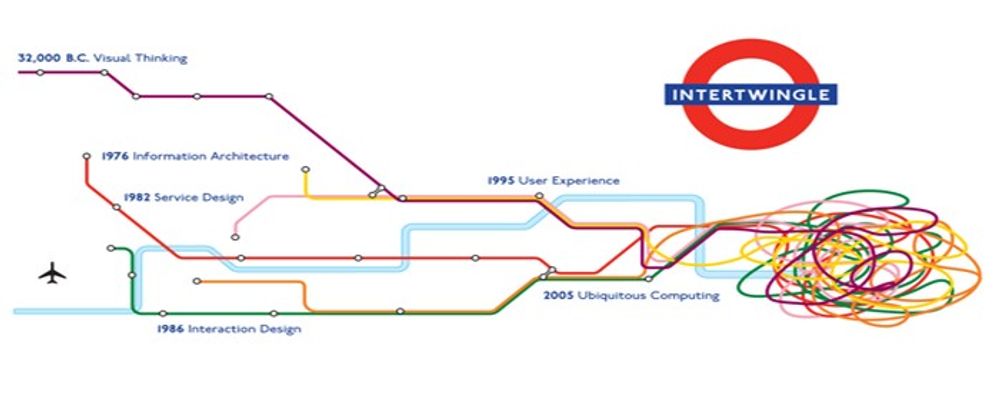


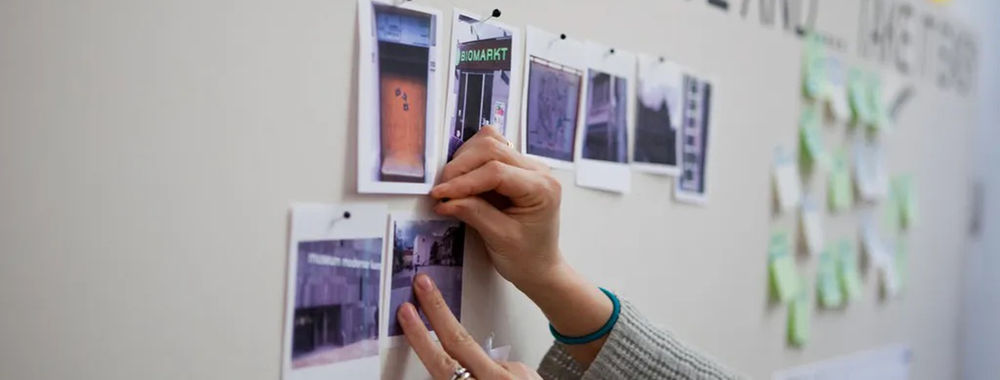
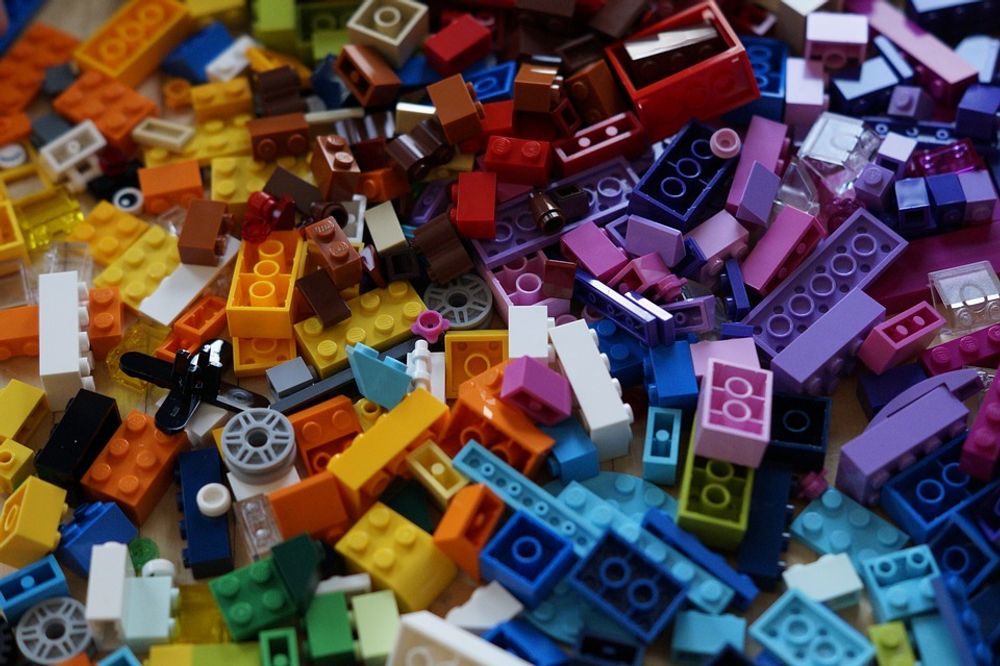
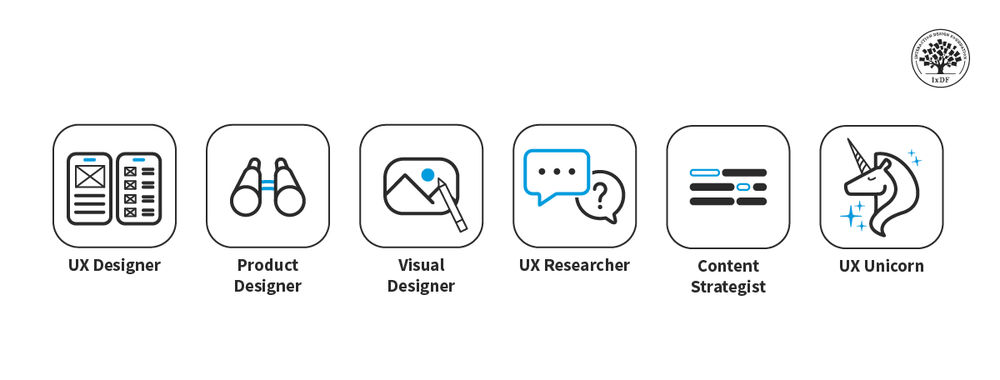
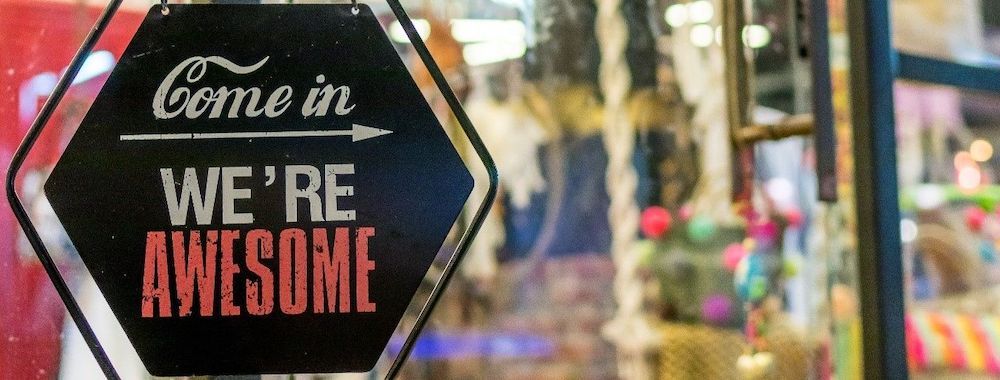
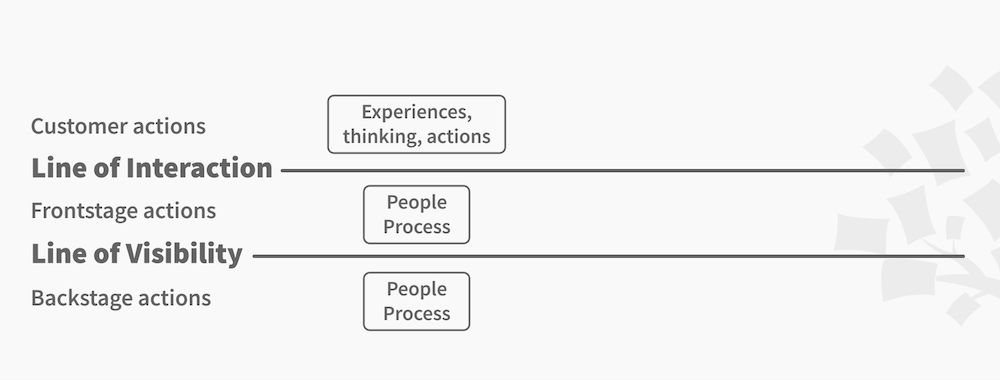
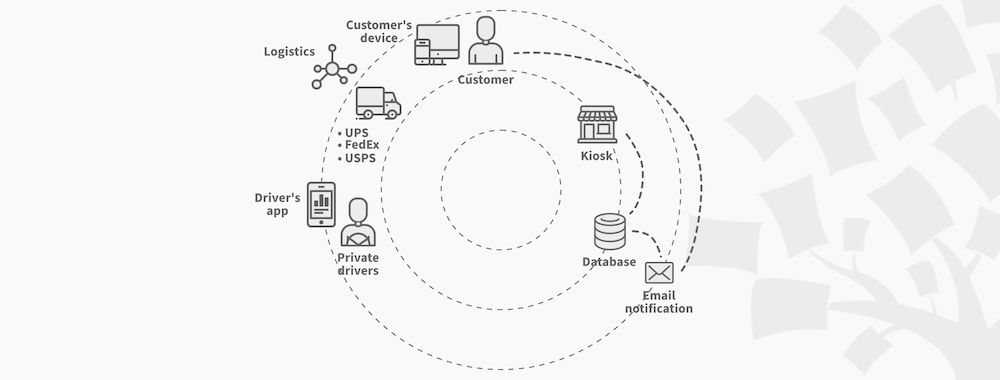
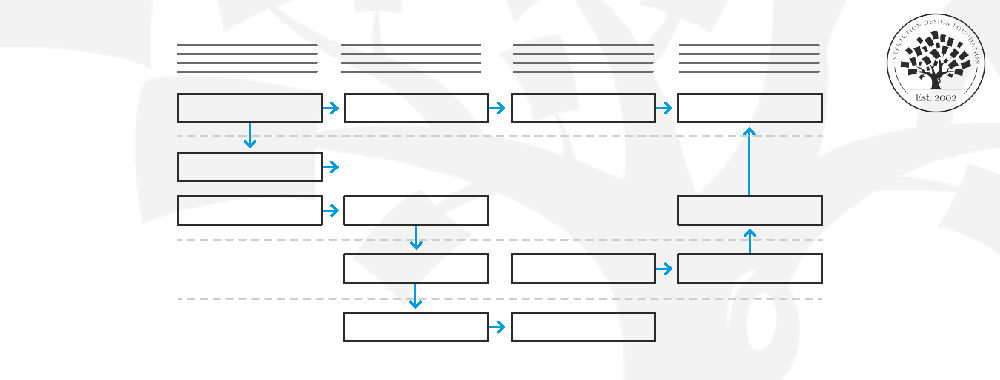
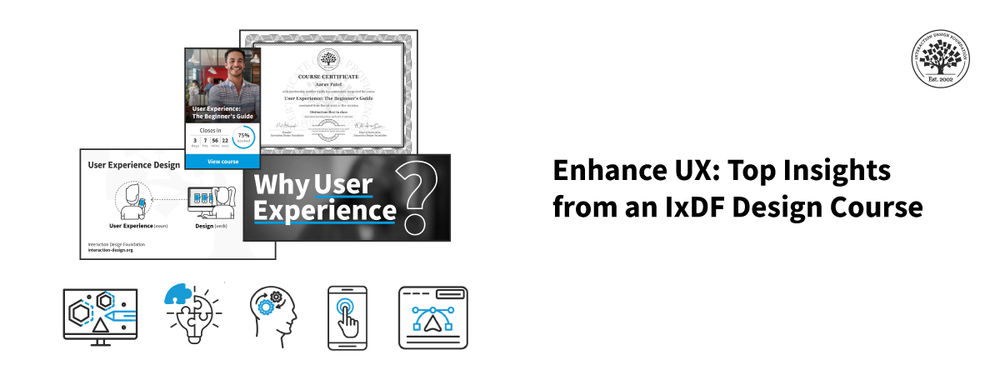
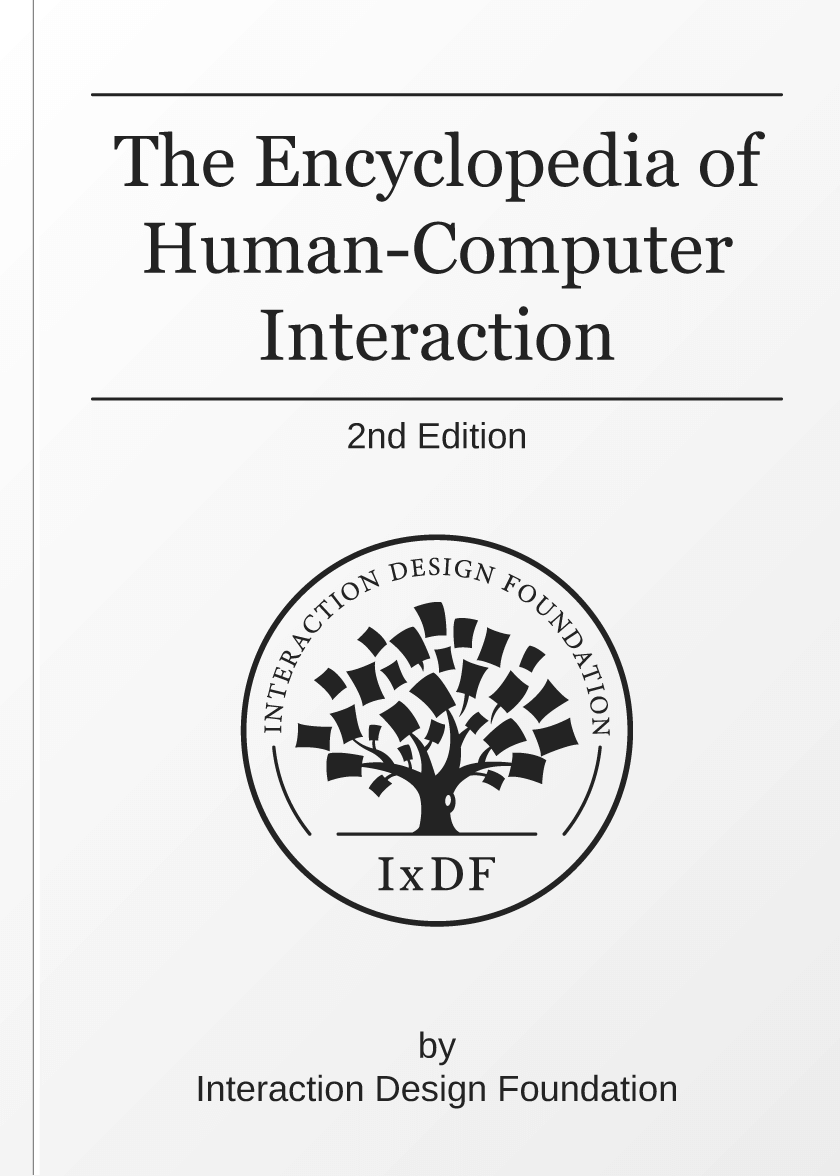
We believe in Open Access and the democratization of knowledge. Unfortunately, world-class educational materials such as this page are normally hidden behind paywalls or in expensive textbooks.
If you want this to change, , link to us, or join us to help us democratize design knowledge!
